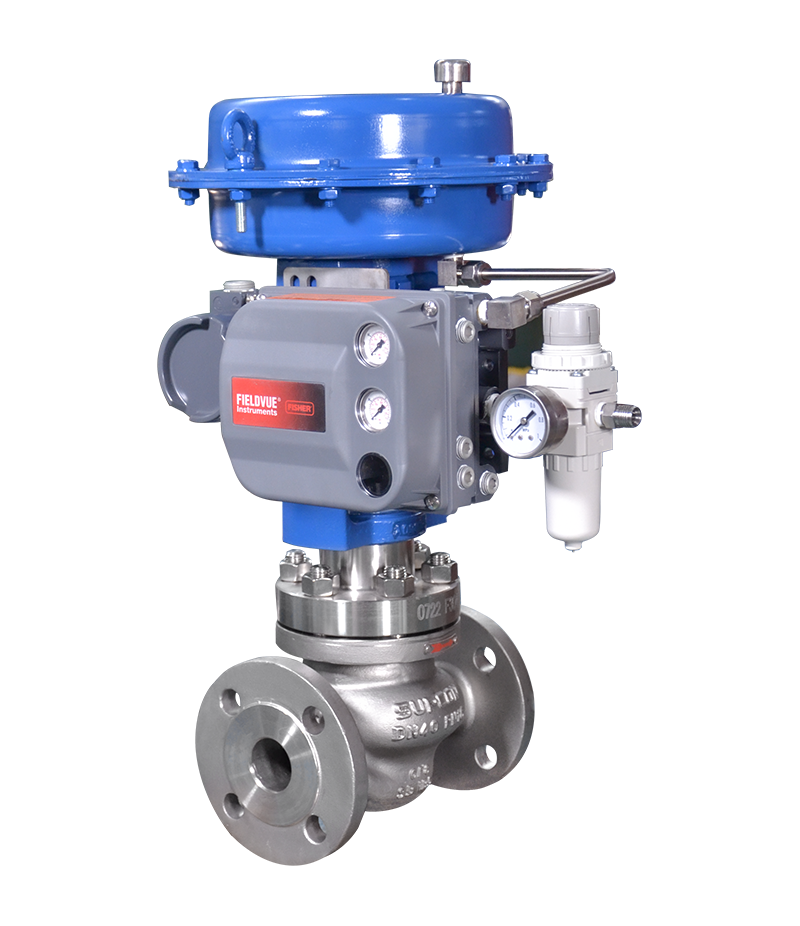Enhancing Functional Performance with Advanced Control Valves

Maximize Energy Savings and Comfort With Advanced Structure Automation Controls
In the world of modern-day architecture and center monitoring, the combination of innovative structure automation manages stands as an essential development. By using the power of automation, structures can adjust, respond, and develop in methods that were as soon as unimaginable.
Energy Efficiency Benefits
Energy efficiency advantages can substantially reduce power intake and operational expenses in buildings. Energy-efficient systems, such as advanced building automation controls, can enhance the use of resources like heating, lights, and air conditioning, leading to reduced power expenditures over time.
In addition, improved energy efficiency can lengthen the lifespan of structure devices and systems. By operating a lot more efficiently, cooling and heating systems, lighting fixture, and various other structure components experience much less wear and tear, causing minimized maintenance and substitute expenses. Furthermore, energy-efficient structures frequently command greater building worths and rental prices, offering long-lasting economic advantages to proprietors.
In addition, power efficiency can boost resident comfort and performance. Appropriately managed indoor environments with optimum lighting and thermal conditions produce an even more favorable and positive work area, resulting in improved employee fulfillment and efficiency. On the whole, the power effectiveness advantages associated with sophisticated structure automation controls are diverse, incorporating price savings, environmental stewardship, and resident well-being.
Improved Convenience Control
Enhancing convenience control in structure environments needs an advanced assimilation of advanced automation systems for optimum occupant health. By using advanced structure automation controls, facilities can tailor the interior atmosphere to fulfill the specific demands and preferences of owners. control valves.
Boosted convenience control surpasses basic temperature adjustments. It includes features such as tailored setups, tenancy sensors, and natural light use to create a dynamic and receptive setting. By integrating these sophisticated controls, structures can not only boost comfort but likewise enhance power effectiveness by optimizing system procedures based on actual tenancy and usage patterns. Inevitably, prioritizing resident comfort through advanced automation systems causes an extra satisfying and healthier indoor atmosphere.
Functional Performance Improvements

Furthermore, the application of real-time tracking and analytics devices allows structure operators to recognize energy inefficiencies and operational anomalies promptly. By constantly keeping track of power use patterns and system performance metrics, modifications can be made in real-time to maximize energy consumption and guarantee peak operational effectiveness. control valves. Additionally, including need reaction strategies into structure automation controls can even more enhance functional effectiveness by dynamically changing power usage based upon grid conditions and prices signals
Indoor Environment Optimization
Reliable interior climate optimization is an essential facet of structure automation controls, ensuring residents' comfort and health while making the most of power savings. By making use of advanced sensors and controls, building automation systems can continually change and keep track of temperature level, moisture degrees, air top quality, and ventilation to create find more info an optimal interior environment. Preserving comfy and consistent conditions not just improves owner fulfillment but likewise enhances productivity and general health.
Interior environment optimization additionally plays an important role in energy performance. By fine-tuning home heating, air flow, and cooling systems based on real-time information and occupancy patterns, constructing automation controls can substantially reduce energy intake - control valves. For example, applying techniques such as demand-controlled air flow and thermal zoning can help decrease energy waste while ensuring that each area of the building receives the essential conditioning.

Lasting Environment Production
Building automation regulates not just enhance indoor climate conditions for power efficiency and passenger convenience but additionally lay the foundation for creating a lasting setting with calculated monitoring of sources and systems. By incorporating innovative building automation technologies, such as sensing units, actuators, and smart software, centers can change and keep an eye on power usage in real-time to decrease waste and minimize their carbon footprint. These systems enable anticipating upkeep, recognizing potential concerns prior to they intensify and maximizing tools efficiency to enhance durability and efficiency.
In addition, sustainable atmosphere development expands beyond power management to incorporate water preservation, waste reduction, and interior air quality improvement. Structure automation controls can control water usage, discover leaks, and make sure correct garbage disposal methods, contributing to general sustainability efforts. Furthermore, by regulating and keeping an eye on air flow and purification systems, these modern technologies improve occupant health and efficiency while lowering power consumption connected with a/c procedures.
Conclusion
To conclude, progressed structure automation controls deal considerable advantages in website link terms of power cost savings, convenience control, functional performance, indoor climate optimization, and producing a sustainable environment. By executing these controls, structures can accomplish optimum efficiency while lowering power intake and enhancing passenger convenience. It is noticeable that making use of advanced automation innovation is crucial in improving structure efficiency and creating an extra lasting future.
Energy effectiveness benefits can significantly lower power intake and operational expenses in buildings. In general, the power efficiency advantages linked with advanced structure automation controls are complex, incorporating cost financial savings, ecological stewardship, and resident well-being.
Additionally, incorporating need reaction methods right into structure automation controls can even more boost functional effectiveness by dynamically adjusting energy usage based Web Site on grid problems and pricing signals.
Building automation regulates not just enhance indoor environment problems for energy performance and owner convenience but likewise lay the foundation for creating a lasting setting with strategic management of systems and sources.In verdict, progressed building automation manages deal considerable advantages in terms of power savings, comfort control, operational efficiency, indoor climate optimization, and developing a sustainable environment.